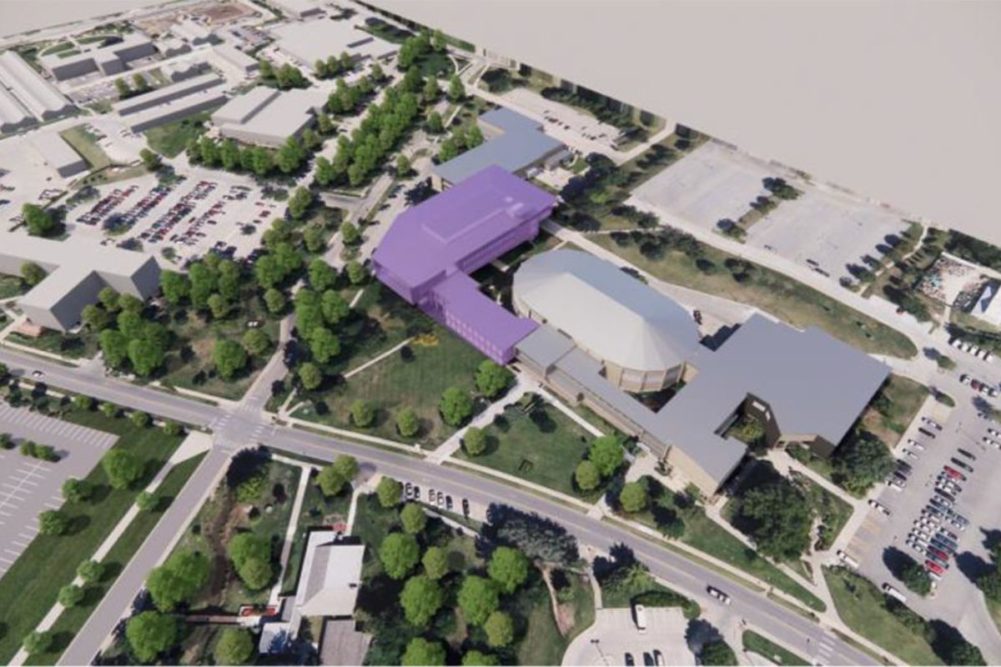SCOTTSDALE, ARIZONA, US — Successfully completing an infrastructure upgrade at the Department of Grain Science and Industry at Kansas State University will be crucial for invigorating the milling science program and training a new generation of milling leaders, Kerry Wefald told the North American Millers’ Association.
Wefald, senior director of development at the KSU Foundation in Manhattan, Kansas, US, spoke Sept. 30 during a general session at the NAMA annual meeting, at the Royal Palms Resort and Spa in Scottsdale.
Helped by appropriations from the Kansas legislature, KSU is working to finalize plans to update its facilities across the school of agriculture, she said. The legislature has committed $25 million to the plan already and has pledged an additional $25 million as a 1-to-3 match if the university is able to raise $75 million. Over the last few months, pledges of $40 million have been secured against the $75 million target.
Sharing an assessment of the College of Agriculture facilities conducted in 2019 by an outside consultant, Wefald said none of the buildings graded higher than a D, and the feed technology building and Shellenberger Hall both received failing grades. Nearly all the buildings are more than 50 years old and have suffered from deferred maintenance for decades.
“We are a global program in grain science in a very unacceptable situation,” Wefald said.
Speaking of students in the milling program and studying in Shellenberger Hall, she added, “It is very difficult to recruit young people today into facilities that are dated, are not appealing and not inspiring for learning.”
In addition to the challenges posed by aging infrastructure, Wefald said Kansas State has had a shrinking student body the last several years.
“There is no easy answer to that,” she said. “In Kansas we have fewer students going from high school to college. We have fewer men going to university. So, it’s a bigger, complex issue that we are working to unfold.”
Enrollment experienced a modest uptick in the 2022-23 school year but remains down more than 4,000 students from the peak and is hovering just below 20,000.
Among causes for optimism, Wefald pointed to the university’s new president, Richard Linton, who assumed his current post in February.
“President Linton appreciates the value of food and agriculture to the state in terms of economic prosperity,” she said. “He knows food and agriculture is important for employment.”
Before joining KSU, Linton was dean of the College of Agriculture and Life Sciences at North Carolina State University for 10 years and before that headed the department of food science and technology at The Ohio State University. His master’s and doctorate were in food science, from Virginia Tech University.
Under the new plans, KSU will be “rebranded as a state and national leader in grain science,” Wefald said.
A master plan has been created with two complexes. One, in the main campus, would be the site of a future food and grain science innovation center. Central to this idea is breaking down silos between food, grain and feed with an interdisciplinary approach, Wefald said. The second will be an agronomy research and innovation center across the school’s football stadium.
“That allows our agronomy folks to do their research, and then take the grains and move them into practical applications, whether it’s milling or baking,” she said. “We will always preserve the farms on the north end of campus because we believe they have rich value for students and researchers.”
Under the plan, Shellenberger Hall would be deactivated and razed, Wefald said. She said the cost of renovating the building is “beyond,” and the vision is to build a new building of innovation. Plans for replacing Shellenberger Hall have been considered for several years.
“A new grain science complex will be connected to other buildings so that individuals in food science will work with others in grain science and animal science,” Wefald said. “Visual appeal is really necessary for young people today. They want to see something that is sharp, that’s welcoming and that’s inclusive.”
Wefald described the initiative as an opportunity for millers and their companies to provide funding.
“It’s an investment in our future to have the grain science and industry teaching that will support your sector and organization going into the future,” she said.
The presentation by Wefald was complemented a day later by one by Hulya Dogan, PhD, interim head of the Department of Grain Science and Industry at KSU, who gave a presentation on the state of the department.
A native of Turkey, Dogan’s educational background was in food engineering. She learned milling science when she joined the faculty of KSU in 2006, where she has been elevated from assistant professor, to associate professor and full professor, before becoming interim department head in July with the departure of Gordon Smith.
The department currently features 12 tenured or tenure-track faculty members, 8 non-tenure-track instructors and 11 staff members. Enrolled in the school are about 100 undergraduate students and 35 to 40 graduate students. The schools has a budget of $6.5 million for “general use” in addition to $5.5 million in awards and grants, Dogan said.
Tracking research funding and productivity, Dogan said peer reviewed research publications have risen steadily in recent years, hitting 94 in 2021 from only 55 in 2017.
Enrollment in milling science and management has fallen sharply, from a peak of 88 in 2017 to only 40 in the current year. Bakery science and management has fallen, too, but over a longer period from 88 in 2014 to 42 in the current year. Feed science and management, the department’s third area of study, has slumped from a recent peak of 51 in 2015 to only 15 students in 2022.
Plans to reverse the enrollment trends include engaging a full-time recruiter and having student mentors and ambassadors representing the Department of Grain Science and Industry.






